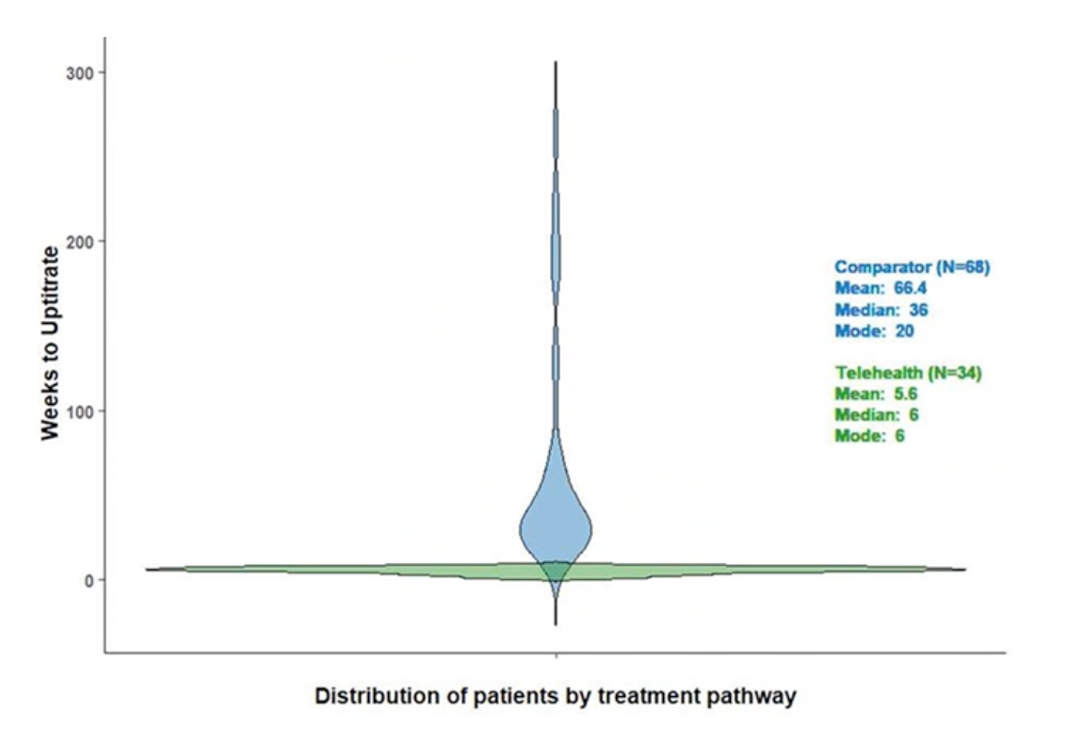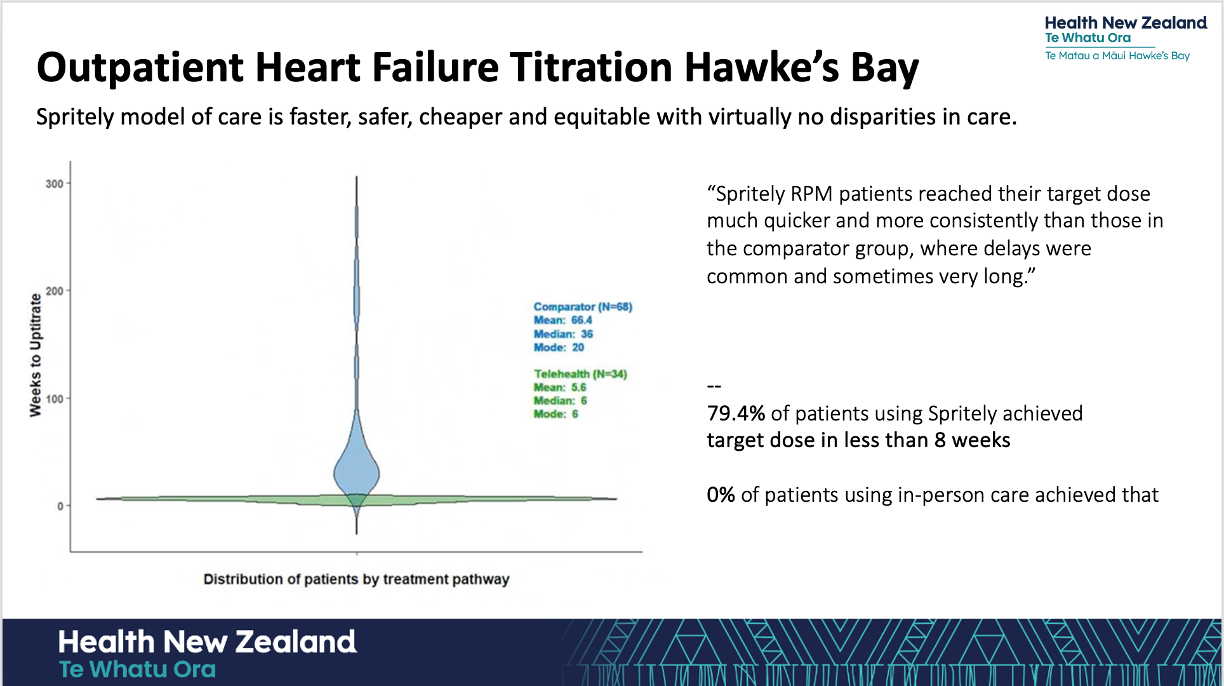
blog detail

August 20, 2025
Telemonitoring
Getting heart failure patients onto the right dose of life-saving medications, quickly and safely (a process called up-titration) is of huge benefit to our health system. Right now, however, it is a challenge, with many patients unable access rapid up-titration. Every week they spend on a suboptimal dose is a week they remain at higher risk of worsening symptoms, avoidable hospitalisation, and even premature death.
That’s why this data from Health NZ in Hawke’s Bay, comparing time to titrate patients is so important. The “violin plot” graph clearly illustrates the impact on patient care that Spritely RPM is having. It was presented at a cardiology conference in Brisbane by Health NZ earlier this week.
It compares the time it took two groups of New Zealand heart failure patients to reach their optimal medication dose (a process called “up-titration”):
The difference is stark: patients supported with Spritely RPM reached optimal therapy around six times faster than those receiving usual care.

Heart failure is a progressive condition. Evidence shows that faster up-titration of guideline-directed medical therapy (GDMT) improves symptoms, reduces hospitalisations, and lowers mortality. In other words, every week saved can mean fewer admissions and better survival.
As one heart failure nurse put it:
“With Spritely, I can safely get my patients onto the right dose in weeks, not months. It feels like the way I already work – just way faster, and more patient friendly.”
With Spritely-enabled care, patients benefit from:
And for nurses:
This isn’t just good news for patients and nurses; it’s good for the health system. Faster optimisation means:
Imagine if every heart failure patient in New Zealand could reach optimal medication doses within weeks, not months or years. We would see:
For nurses, it means a sustainable way of working — caring for more patients with less burnout, backed by technology that works the way they do.
Spritely’s RPM platform is proving that this isn’t just possible — it’s achievable right now. With a national rollout, we could deliver safer, faster, more equitable care for heart failure patients, while easing pressure on our health system and supporting the workforce that sustains it.
Click here to learn why Spritely is uniquely equipped to deliver the safest, most efficient, and most cost-effective management of heart failure patients in New Zealand.

October 28, 2025

September 16, 2025